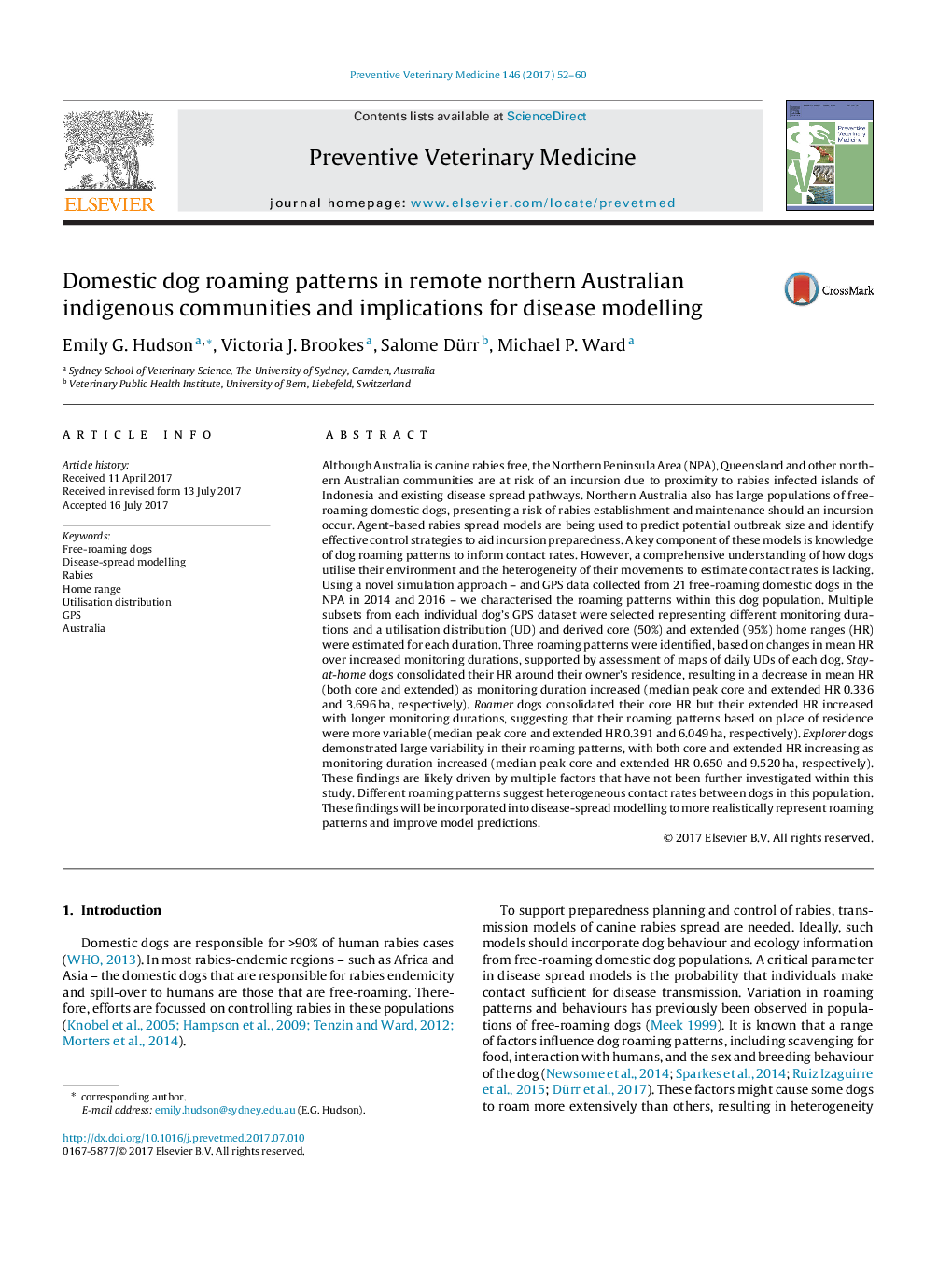| کد مقاله | کد نشریه | سال انتشار | مقاله انگلیسی | نسخه تمام متن |
|---|---|---|---|---|
| 5543487 | 1554144 | 2017 | 9 صفحه PDF | دانلود رایگان |
عنوان انگلیسی مقاله ISI
Domestic dog roaming patterns in remote northern Australian indigenous communities and implications for disease modelling
ترجمه فارسی عنوان
الگوهای رومینگ سگ خانگی در جوامع بومی شمال شرق استرالیا و پیامدهای مدل سازی بیماری
دانلود مقاله + سفارش ترجمه
دانلود مقاله ISI انگلیسی
رایگان برای ایرانیان
کلمات کلیدی
سگهای رایگان رومینگ، مدل سازی گسترش بیماری، بی خوابی، محدوده خانه، توزیع توزیع، جیپیاس، استرالیا،
موضوعات مرتبط
علوم زیستی و بیوفناوری
علوم کشاورزی و بیولوژیک
علوم دامی و جانورشناسی
چکیده انگلیسی
Although Australia is canine rabies free, the Northern Peninsula Area (NPA), Queensland and other northern Australian communities are at risk of an incursion due to proximity to rabies infected islands of Indonesia and existing disease spread pathways. Northern Australia also has large populations of free-roaming domestic dogs, presenting a risk of rabies establishment and maintenance should an incursion occur. Agent-based rabies spread models are being used to predict potential outbreak size and identify effective control strategies to aid incursion preparedness. A key component of these models is knowledge of dog roaming patterns to inform contact rates. However, a comprehensive understanding of how dogs utilise their environment and the heterogeneity of their movements to estimate contact rates is lacking. Using a novel simulation approach - and GPS data collected from 21 free-roaming domestic dogs in the NPA in 2014 and 2016 - we characterised the roaming patterns within this dog population. Multiple subsets from each individual dog's GPS dataset were selected representing different monitoring durations and a utilisation distribution (UD) and derived core (50%) and extended (95%) home ranges (HR) were estimated for each duration. Three roaming patterns were identified, based on changes in mean HR over increased monitoring durations, supported by assessment of maps of daily UDs of each dog. Stay-at-home dogs consolidated their HR around their owner's residence, resulting in a decrease in mean HR (both core and extended) as monitoring duration increased (median peak core and extended HR 0.336 and 3.696Â ha, respectively). Roamer dogs consolidated their core HR but their extended HR increased with longer monitoring durations, suggesting that their roaming patterns based on place of residence were more variable (median peak core and extended HR 0.391 and 6.049Â ha, respectively). Explorer dogs demonstrated large variability in their roaming patterns, with both core and extended HR increasing as monitoring duration increased (median peak core and extended HR 0.650 and 9.520Â ha, respectively). These findings are likely driven by multiple factors that have not been further investigated within this study. Different roaming patterns suggest heterogeneous contact rates between dogs in this population. These findings will be incorporated into disease-spread modelling to more realistically represent roaming patterns and improve model predictions.
ناشر
Database: Elsevier - ScienceDirect (ساینس دایرکت)
Journal: Preventive Veterinary Medicine - Volume 146, 1 October 2017, Pages 52-60
Journal: Preventive Veterinary Medicine - Volume 146, 1 October 2017, Pages 52-60
نویسندگان
Emily G. Hudson, Victoria J. Brookes, Salome Dürr, Michael P. Ward,
